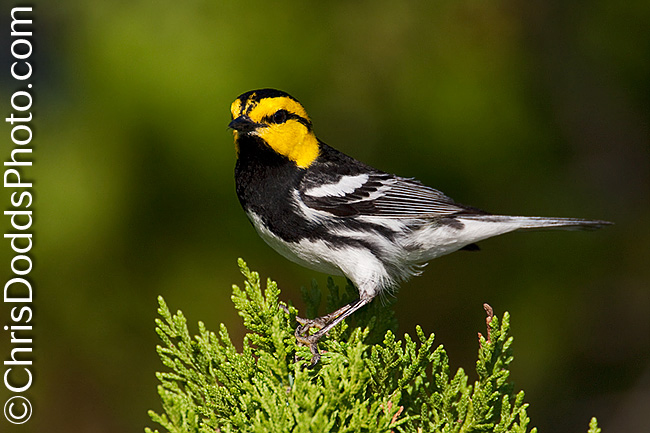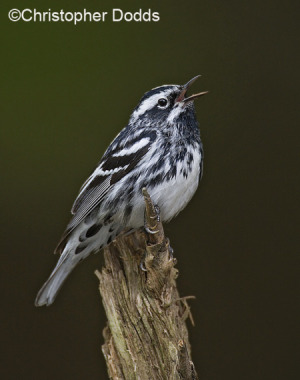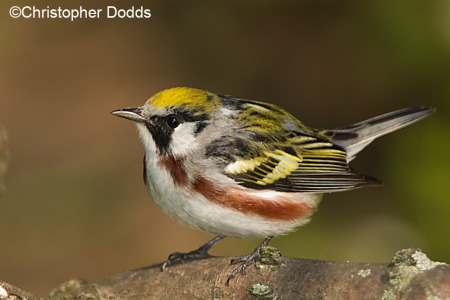
Red-Bellied Woodpecker, Rondeau Provincial Park, Morpeth, Ontario Canada ©Christopher Dodds www.chrisdoddsphoto.com Canon EOS 1DsMKIII, 500mm F4 Lens with 2X II Tele-converter ISO 400, F8, 1/800s Aperture priority (evaluative +1), Canon 580EXII Flash ETTL II -2+2/3
A member of the Picidae family, the Red-Bellied Woodpecker, Melanerpes carolinus, is a medium-sized woodpecker that breeds in sothern Canada and the northeastern United States of America. The adult males have a red cap that extends from the bill to the nape; females have a red patch on the nape and another above the bill.
While leading my recent Point Pelee Workshop, we made several hour-long journeys to Rondeau Provincial Park in Morpeth, Ontario. There are trailer campsites at Rondeau where many campers park RVs for weeks at a time. The campers have had bird feeders up for years, so the migrating birds are easy to “bait” to new feeder set-ups for photography. I had placed this perch on top of a picnic table (with carefully placed, out of sight peanut butter on it’s rear) with the hopes of attracting Red-Headed Woodpeckers. The Red-Headed Woodpeckers never showed, so this was a nice back-up subject. It does help to have good relations with the campers, I asked many to remove their feeders so the birds had fewer options.
Most who know me have noticed that I’ve been using Aperture Priority lately. I’m a huge advocate of Manual Mode while photographing in constant light. Knowing when and where to use the different tools available to us as photographers is crucial to making consistently well-exposed images. I was plagued with changing light levels and photographing from a set-up with a constant background – there was no better choice than aperture priority.



















